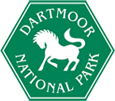Haytor's Wildlife and Heritage
Haytor Quarry & Tramway
The largest of the five granite quarries in the area, Haytor Quarry has two areas of past extractive activity and many associated spoil heaps. The quarry was worked from the late 18th century and sporadically throughout the 19th century until the 1860s.
A granite quarrying operation was opened here in the early part of the 19th century by a local landowner and businessman, George Templer. A tramway uniquely built from granite and designed to take horse-drawn trucks, was constructed in 1820 to transport quarried granite down to Stover Canal, where it was then taken to Teignmouth Docks. It is unique in that it consists of parallel lines of rectangular granite setts, rather than iron rails, with flanges cut along the upper outside edges. When laid end to end, the flanges formed a continuous rail, along which flat-topped trucks ran on flangeless wheels. Each truck could carry up to three tons!
Did you know?
Granite from Haytor was used in the old London Bridge and the British Museum. You can walk along the Templer Way, tracing the route by which granite was exported via the unique Haytor Granite Tramway.
Walk the Templer WayTin working
There are several areas of tin working on Haytor Down. Most date to between the 12th and 18th centuries. These are streamworks where the alluvial deposits of tin, which lay in the bottom of streams, were exploited using the power of the water to wash away the lighter waste material. The waste material was formed into spoil heaps, which were used to divert water onto fresh deposits of tin ore. These often appear to be in parallel sinuous lines.
Wildlife
Large expanses of bracken thrive in this area. Although this habitat is of less wildlife value than upland heathland, it supports rare fritillary butterflies. These can be seen especially on sunny, south-facing slopes. In the Haytor area, towards Bag Tor, small pearl bordered, dark green, silver washed and the rare high brown fritillaries have been recorded. The caterpillars of fritillaries feed on violets which are found under the bracken stands. The chrysalids survive the harsh winter in the insulation of the dead bracken litter.
The spectacular emperor moth, a day-flying moth with ‘eyes’ on its wings, and whose caterpillars are bright green and feed on heathers, can be seen in the area.
Regularly seen on the moorland are skylarks, meadow pipits, stonechats, wheatear, Dartford warblers and the occasional raven. Ravens often congregate in groups outside the breeding season, and perform superb acrobatic displays. Overhead you may see buzzards. There are also lush ferns which appear in the summer months. Reptiles such as common lizard can also be seen basking in the early morning sunshine before darting off to catch insects.
